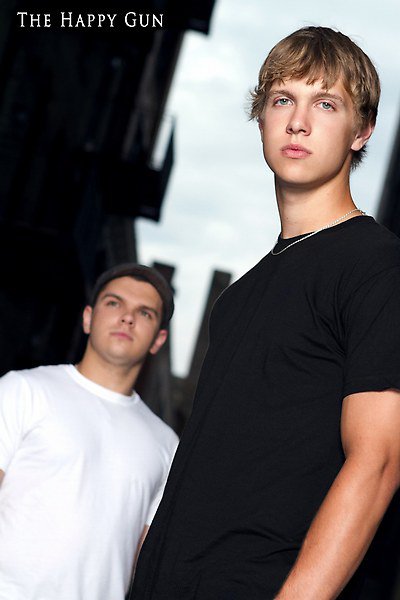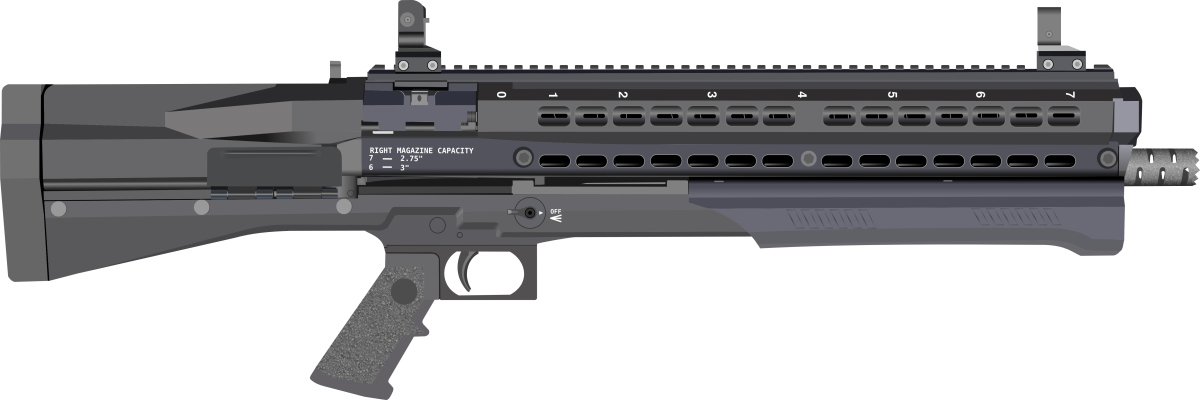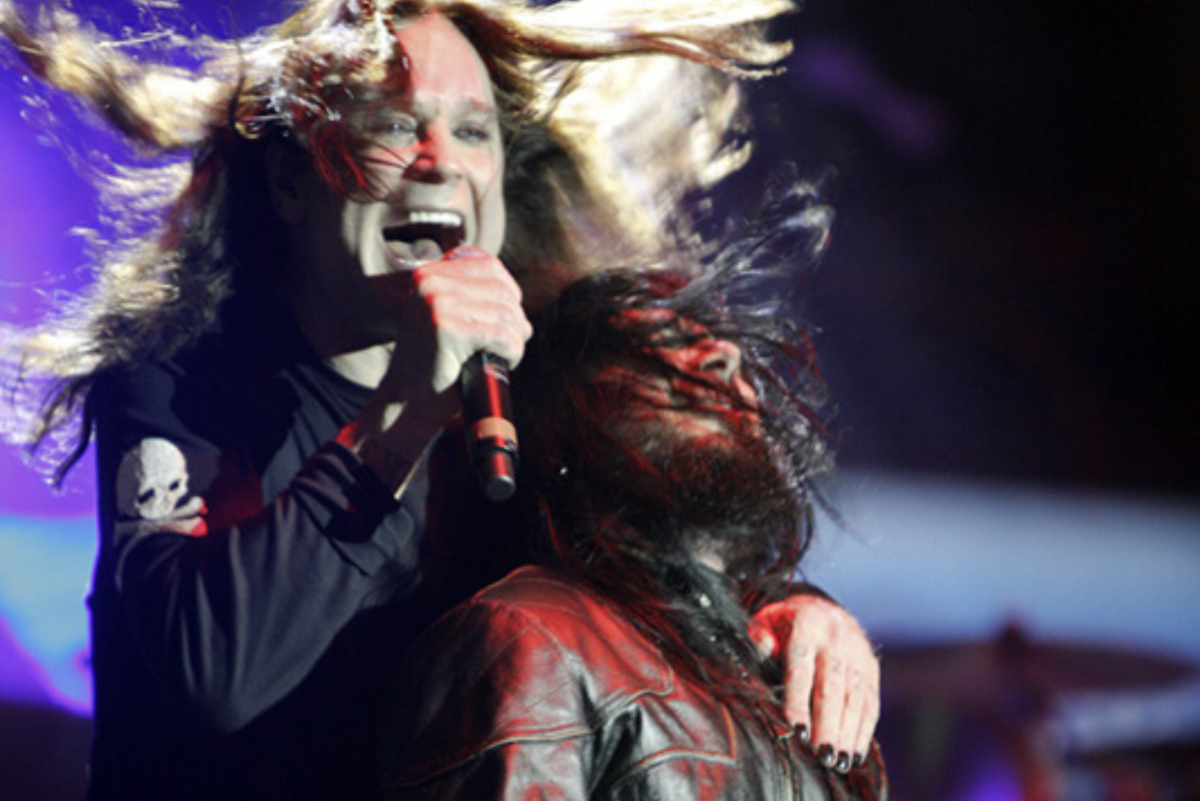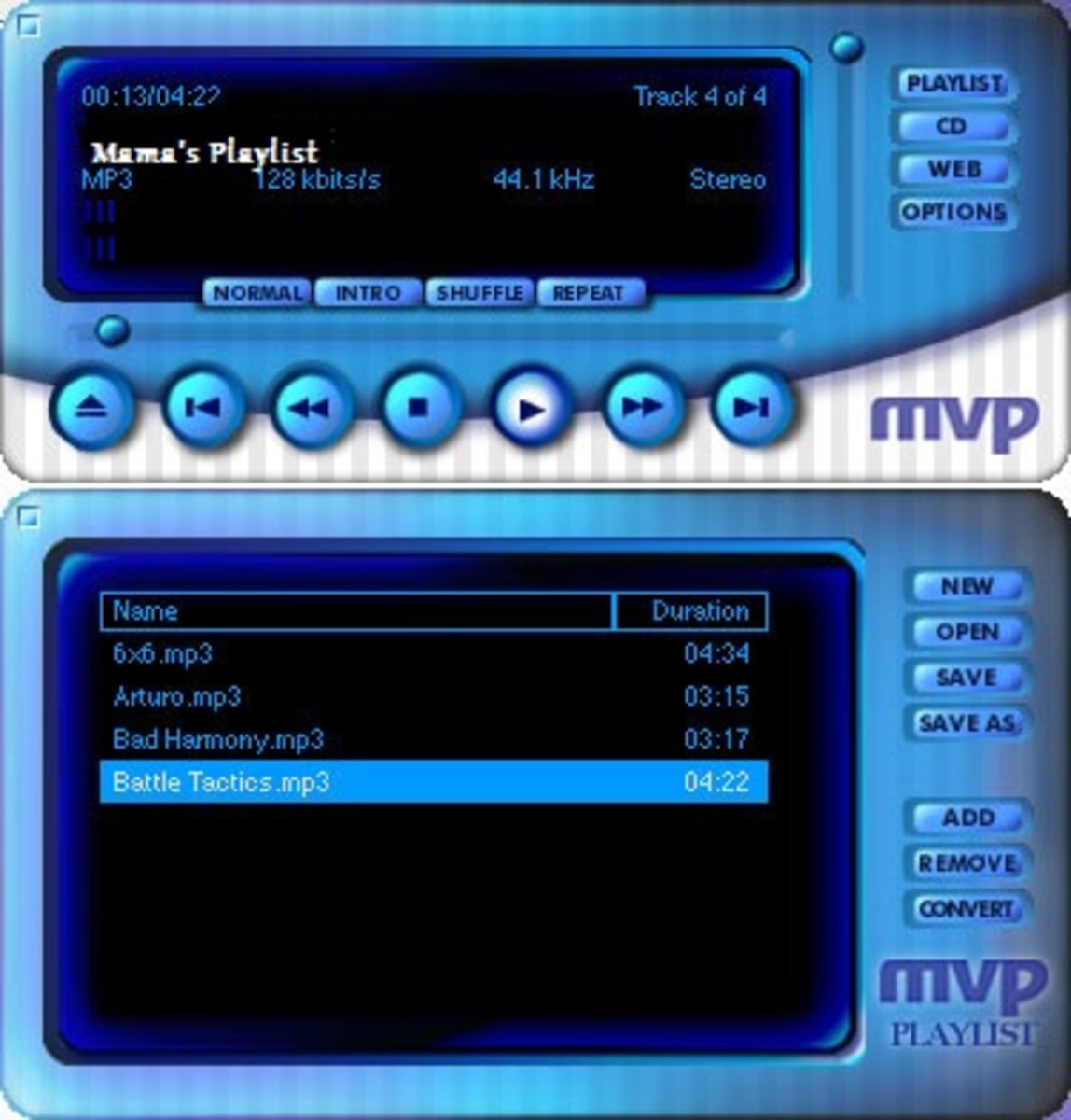New (to Me) Artist Spotlight: The Happy Gun

At first, I was hesitant to do a “Spotlight” article on the band known as The Happy Gun. One of the main drawbacks of writing about new artists comes from not always having enough material to do an honest and in-depth analysis of their sound. It’s usually my practice to refrain from doing a review until I can get a collection of material that adequately demonstrates the artist or group’s capabilities. In my opinion, with the release of the seven-track EP A Villain Playing the Victim, The Happy Gun proves that, even as a fledgling group with a limited number of tracks, they have a very mature understanding of unity in theme and composition and have the potential to do great things in the future.
Biography
The Happy Gun is comprised of two brothers, Brett and Tony Benka. They grew up and are currently living in Milwaukee, Wisconsin. The younger of the two, Brett (22), began teaching himself the guitar at 12 years old and started singing at 15. Tony (25), a drummer since age 10, performed with a hardcore band in high school called Waking Up Mary. Brett would not truly begin his own musical pursuits until college, a time during which he took vocal lessons and started seriously performing.
Both brothers share a passion for songwriting, and even though Brett’s pop sensibilities sometimes clash with Tony’s more aggressive, hardcore influences, the two find common ground in the desire to make thoughtful and well-crafted music. The brothers formed The Happy Gun in 2009, and since then, they have developed a style that is currently a mix of acoustic, electronic, and digital arrangements. Their first body of work was released as an EP in late 2011 under the title A Villain Playing the Victim.
The Dark Side of Me
The Sound
The Happy Gun’s sound, I believe, doesn’t come from a place in which it can be described as being truly unique. This should in no way, however, be considered a bad thing. In fact (and I may catch slack from some people for saying this), but I don’t think that the emphasis on being different by doing something “new” is as important as being different by doing something “well.” Don’t get me wrong—being able to accomplish both gets you extra points, but the absence of newness doesn’t necessarily rob someone of being talented, as some might have us to believe. Much of an artist or group’s lasting quality is a matter of presentation and knowing when and how to exploit certain strengths. The Happy Gun’s greatest strength, in my opinion, comes from having a keen sense of balance.
In terms of vocal skill, Brett Benka seems to be very much aware of his capabilities. His voice is not so distinct as to make it unmistakably recognizable, but he does benefit from having a sound quality that is pleasing to the ears. Brett is fluid in his delivery, and within his range of comfort, he knows how to engage the music to potent effect.
The instruments and production follow a similar approach as far as maintaining a sense of congruence. Though traces of different genres can be detected as influences in the music, no single style is used in excess to the point of being distracting or compromising the balance of any particular track. The sounds blend nicely, and the tracks don’t toss the listener around from one mood to the next just for the sake of being experimental. If there is any sort of musical exploration going on, it has been evenly integrated in a way that flows and enhances the overall feel of the song.
More than anything else, The Happy Gun shines when it comes to lyrics. At times, they can be abstract and haunting and during others straightforward and soothing. This mixture proved to be the point where I was most impressed by A Villain Playing the Victim.

Exposing the “Villain”
As a casual listener and observer of music, I will admit that I am sometimes confused about the labels that are used to describe collections of tracks. In a world where mixtapes sound like albums, EPs are longer than some LPs, and so-called “solo” records take a backseat to a host of featured artists, it’s anybody’s guess what the real standards are any more. I say this not to go off on a tangent, but to describe my approach in listening to A Villain Playing the Victim. With seven unique tracks, it leans in favor of being a mini-album rather than serving the more traditional EP role of showcasing a couple of studio songs along with “B-side” variants in the form of demos, remixes, etc. In fact, this seems to be the popular modern trend, especially with many new artists that I’ve heard.
When I listen to albums (and this is just me), I tend to judge them by different criteria than when I’m listening to another type of collection. I look for the unified form of expression and pay more attention to how everything fits together instead of how the tracks sound separately. I don’t usually give EPs the same critical eye because they are usually intended to be just a sample of what’s coming up on the full album and may give a false impression of the true overriding theme of the complete work. A Villain Playing the Victim, although labeled as an EP, is a different sort of project, however. Because it is so thematically driven, it works much better if listened to as an album.
The Happy Gun’s lyrics have a very subtle and versatile ambiguity to them, and when one considers the implications of the title of the EP, the resonance is even more chilling. You can literally listen to this collection, for the most part, from two different points of view: either as simply the “victim” or as the “villain playing the victim.” This realization didn’t hit me fully until I got to the last track, “Lights Down Low.”
Lights Down Low
The subject matter in the songs (longing, heartache, etc.) remains pretty consistent throughout and might be seen as a negative by some for lack of diversity. When not looking at it from the perspective of a traditional EP, however, and instead focusing on A Villain Playing the Victim as a unified, concept driven work, the fact that the group only appears to be talking about the same things becomes more obvious. The whole work is full of imagery about disguises and masks, but for some reason, “Lights Down Low” was the song that finally clicked and brought everything together in a way that made me question the way I had been listening to the entire EP. With this track (simplified view, of course), it is very easy to just listen to it as a heartfelt plea for a good person to maintain inner purity while facing the trappings of a corrupt world. On the other hand, you can also listen to the lyrics as describing an already corrupt individual who is pretending to be good and trying to avoid exposure.
The thematic implications made me listen to everything over again, and with a couple of exceptions that might otherwise be a bit of a stretch, I found that most of the songs could be listened to along the same lines as “Lights Down Low.” Once I finished the EP for the second time, A Villain Playing the Victim went from being pretty good to being incredible. In fact, that revelation was what finally convinced me that I had to write about The Happy Gun.
The duality, I believe, is achieved by the maintaining of balance that I previously described. No track is invariably upbeat and lively or, in the alternative, melancholy and threatening. Therefore, each can be viewed as either, should you so choose to hear it that way. Had some of the tracks been a little more up-tempo or flashy vocally, the effect might have been ruined. Once you see what’s going on, you realize that if at any point you questioned the breadth of the brothers’ abilities as songwriters or musicians, you can no longer fault them for not exploring more territory. In fact, it makes you want to hear another set, just to see if they’ve been hiding a completely different part of their sound.
Conclusion
In the end, though, I’m left in a weird place about how to assess how The Happy Gun might appeal to a larger audience. The listening experience very much resembles the telling of a joke. If you get it, then you laugh and everything is incredible. But if it goes over your head and someone has to explain the punch-line, then you might very well chuckle, but for the most part you'll probably discredit the effectiveness. The subtle quality of The Happy Gun’s style leaves them equally exposed to either scenario, I think, and thus they run the undesirable risk of falling into the clichéd and painfully overrepresented category of the misunderstood artist.
So, where does that leave The Happy Gun at the end of the day with the average listener? I honestly don’t know. I acknowledge that I might be giving The Happy Gun too much credit in some areas, and it’s entirely possible that even they might not hear A Villain Playing the Victim in the way that I do. That’s fine. The fact remains, however, that the dual interpretation is there to be discovered, either by chance or as a part of a well-conceived plan. Such things are what make music personal.
The Happy Gun’s A Villain Playing the Victim is a testament to how many layers music can have if you take the time to truly listen. Like the theme it promotes, the EP itself demonstrates that there might be something just below the surface of any given experience that could potentially make you question the way you would ordinarily view things, and in some cases, even without those deeper levels, there is still much to be appreciated. Beyond labels and categories, I believe that counts for something, and if this is just a hint of what’s to come, I look forward to hearing more from The Happy Gun.








